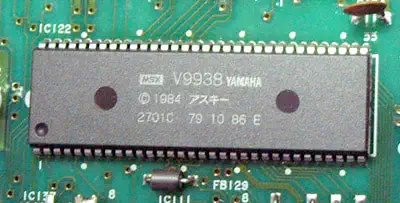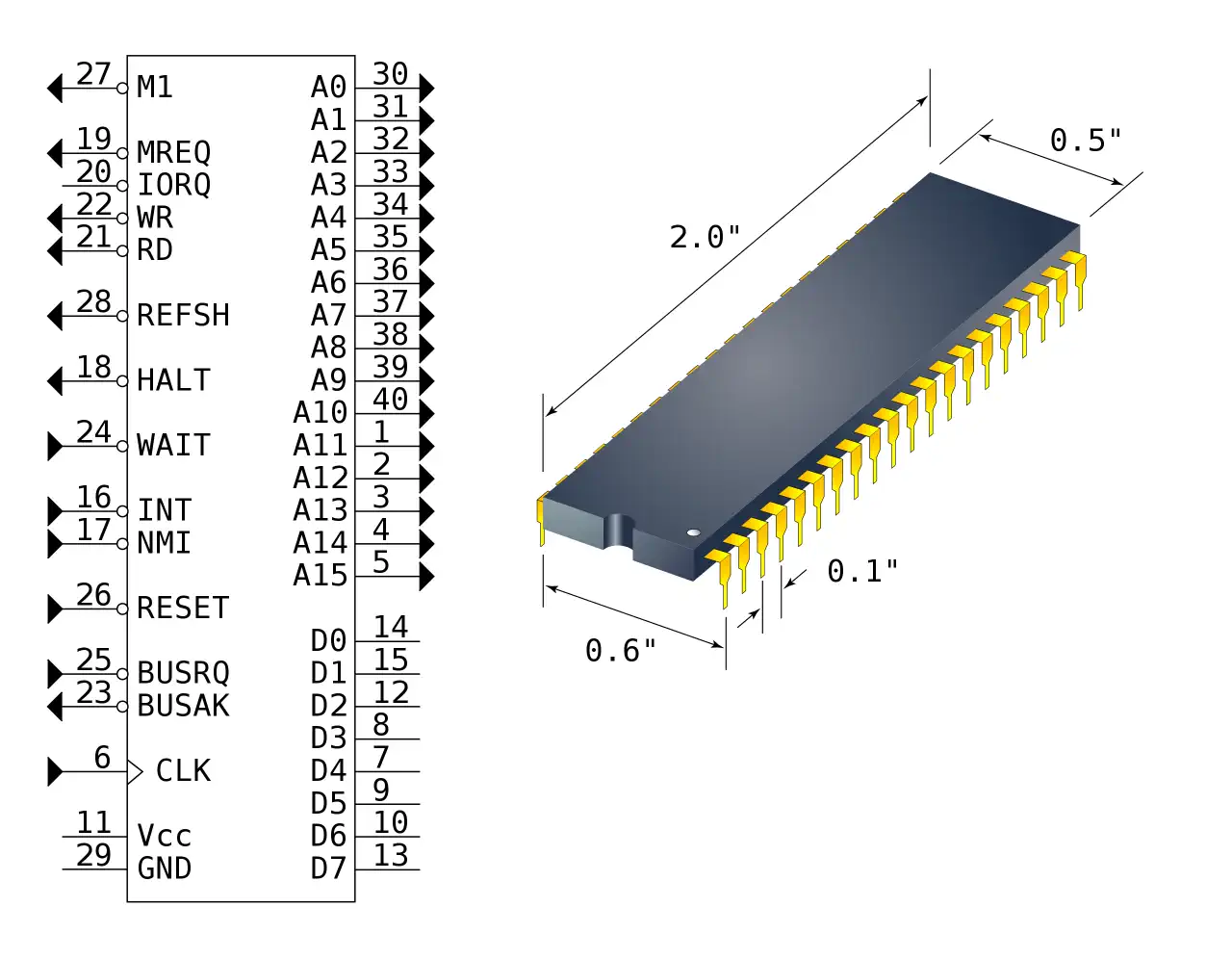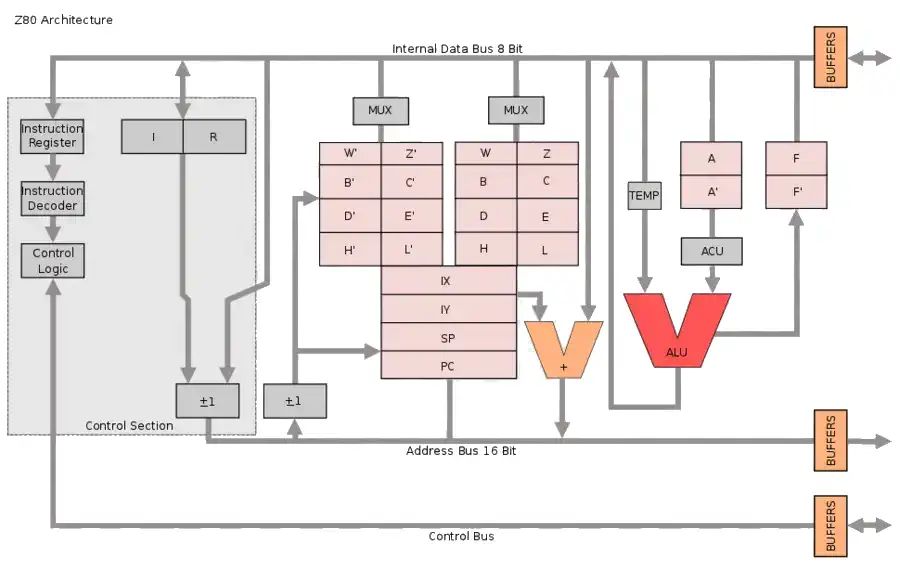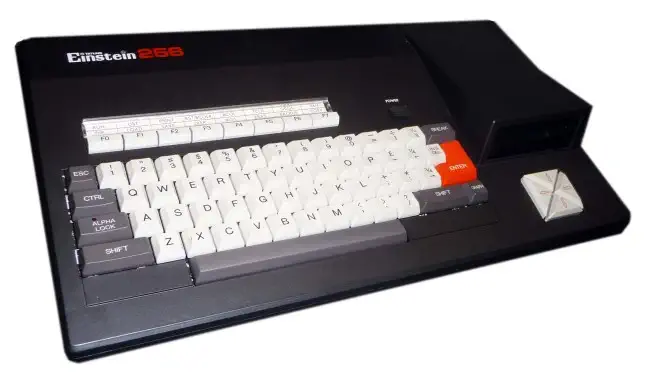Introduction
The Tatung Einstein 256 was the successor of the Tatung Einstein machine. It had improved graphics capabilities delivered by the Yamaha V9938 Video Display Processor, the same chip that the MSX2 standard computers used.
The Einstein 256 had 256KByte of RAM, 64KByte was available to the CPU, and 192KByte was VRAM, giving the computer exceptional graphics capabilities. The case itself was much smaller than its predecessor, and came standard with a built in 3" disk drive. This is the same type of disk drive that the Amstrad and the Sinclair +3 computers used.
Plenty of external peripheral connectors are available on this machine
- RS232C port
- Printer port
- Two joystick ports
- Serial port than can be parallel as well, depending on a switch
- RGB video out
- Composite video out
- Mono audio out
- TV RF-Out
- VAMP socket for Video Mouse and Light Pen.
- Headphone out
The operating system is EDOS, and comes also with EBASIC, which is entirely rewritten for the Einstein 256 to take advantage of the new graphics capabilities.
V9938 Video Display Processor
The V9938 is a video display processor developed by Yamaha. It is mainly used on MSX2 computers, but also in teh Tatung Einstein 256 and the Geneve 9640 enhanced TI-99/4A clone. Some MSX-1 computers used it with 16kByte of memory to enable a 80 column text display
Specifications:
- Video RAM: 16-192 KByte
- Text mdoes: 80x24, 40x24, 32x24 (with sprite capability and multi-color)
- Graphics: 512x212 (16 colors from 512), 256x212(16 colors from 512) and 256x212 in 256 colors
- Sprites: 32 sprites, 16 colors (2 per line), 8 sprites per scanline
- Hardware Accelleration for copy, line, fill and logical operations
- Interlacing for doubling of resolution
- Vertical scroll register
- Clock: 21 MHz
- Superposition and digitization capabilities
- Video Output: 15 kHz
- Support for lightpen and mouse<

Programmable Sound Generator (AY-3-8910 compatible PSG)
The AY-3-8910 is a 3-voice Programmable Sound Generator, or PSG. It was designed by General Instrumet in 1978 for use with their own 8-bit PIC1650 and their 16-bit CP1610 computers.
The PSG is widely used in many arcade cabinets, pinball machines, and many micro-computers. Here is a list of some of the major brands of computer that used the AY-3-8910:
- Intellivision
- Vectrex
- Amstrad CPC range
- Oric-1
- Color Genie
- Elektor TV Games Computer
- All MSX-1 and MSX-2 computers
- ZX Spectrum home computers
General Instrument spun of MicroChip Technology in 1987 and the chip was sold under the MicroChip brand, and licensed to Yamaha as the YM2149F which the Atari ST range of computers use. Functionally the PSG is very similar to the Texas Instruments SN76489.
Variants:
-
AY-3-8910
Comes with 2 general purpose 8-bit parallel I/O ports, used for Keyboard and Joystick in for instance MSX. -
AY-3-8912
Same chip, but in a 28-pin package. Parallel port B is not connected to save cost and space. -
AY-3-8913
Same chip, but in a 24-pin package. Both parallel ports are not connected. -
AY-3-8914
The AY-3-8914 has the same pinout and is in the same 40-pin package as the AY-3-8910, except the control registers on the chip are shuffled around, and the 'expected input' on the A9 pin may be different. It was used in Mattel's Intellivision console and Aquarius computer. -
AY-3-8930
Backwards compatible but BC2 pin is ignored
YM2149F -
YM3439-D
CMOS version of the Y2149 in 40-pin DIP -
YM3439-F
CMOS version of the Y2149 in 44-pin QFP -
YMZ294
Variant of the YM3249 in an 18-pin package. Parallel ports not connected, and all sound channels mixed on 1 port. -
T7766A
Toshiba variant of the AY-3-8910, fully compatible. Used in some MSX models. - Winbond WF19054, JFC95101, and File KC89C72: Fully compatible versions of the AY-3-8910 produced for slot machines.
Yamaha Produced chip, same pin-out as the AY-3-8910, but pin 26 could halve the master clock. Can be used to replace the AY-3-8910 if pin 26 is left disconnected.
Zilog Z80 CPU Family
The Z80 quickly became popular in the personal computer market, with many early personal computers, such as the TRS-80 and Sinclair ZX80, using the Z80 as their central processing unit (CPU). It was also widely used in home computers, such as the MSX range, SORD, and the Amstrad CPC, as well as in many arcade games. Additionally, it was also used in other applications such as industrial control systems, and embedded systems. The Z80 was widely used until the mid-1980s, when it was gradually replaced by newer microprocessors such as the Intel 80286 and the Motorola 68000.
The Z80 microprocessor was developed by Zilog, a company founded by Federico Faggin in 1974. The Z80 was released in July 1976, as a successor to the Intel 8080. It was designed to be fully compatible with the 8080, but also included new features such as an improved instruction set, more powerful interrupts, and a more sophisticated memory management system.
The Z80 quickly became popular in the personal computer market, with many early personal computers, such as the TRS-80 and Sinclair ZX80, using the Z80 as their central processing unit (CPU). It was also widely used in home computers, such as the MSX range, SORD, and the Amstrad CPC, as well as in many arcade games. Additionally, it was also used in other applications such as industrial control systems, and embedded systems. The Z80 was widely used until the mid-1980s, when it was gradually replaced by newer microprocessors such as the Intel 80286 and the Motorola 68000. The design was licensed to Synertek and Mostek as well as the European SGS.
The Z80s instruction set is binary compatible with the Intel 8080, so that 8080 code such as the CP/M Operating System and Intel's PL/M compiler for the 8080 can run unmodified on the Z80. The Z80 had many enhancements over the 8080 such as 16-bit data movement instructions, block copy and block I/O instructions, single bit addressing of all registers, IX/IY offset registers, better interrupt system and a complete duplicate register file for context switching during an interrupt.
Source: WikiPedia

VRAM: 128kB Sound Chip General Instruments AY-3-8910 Programmable Sound Generator Sound 3 wave channels + white noise Display Chip Yamaha V9938 Display All MSX-1 modes
256x212 16 color
512x212 4 color
512x212 2 color
256x212 256 color Best Text 80x24 Best Color 256 simultaneous, or 16 out of 512 colors Best Graphics 512x424 interlaced Sprites 16 color, 16x16, 8/scanline, 64 total System OS EDOS + EBASIC


